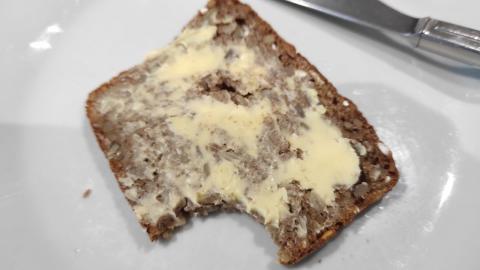Last bake down here in Fort Lauderdale for the season for one last dinner party. Fougasse really are fun to bake, the shaping especially is. Trying a different flavor this time using sun dried tomatoes, pecorino cheese and oregano. Once again this is a very delicious bread and perfect for those who want to maximize the crispy crust. It is exceptionally difficult to keep bread crispy down here in humid Florida, but a few minutes in the oven just before serving does the trick.
Levain Overnight
12 hours warm room temperature 74-76°F.
In large bowl add the water and the levain then dissolve. Then add salt and sun dried tomato oil, then whole wheat flour and mix, finally add bread flour. After 10 mins of autolyse, slap and fold to develop the dough moderately. Towards the end of mixing add the grated Pecorino cheese, oregano and chopped sun dried tomatoes through stretch and folds in the bowl. Finally give the dough a bench letterfold and place into the bowl.
At 30 min intervals give the dough coil folds. After the third set give the dough 1 hour 30 mins rest.
Allow the dough to rise to about 40-50% then shape.
To remove the dough from the bowl drizzle olive oil onto and around the edges of the dough. Then gently spread the olive oil over the surface and around the sides. In the bowl flip the dough to oil the bottom of the dough.
Transfer the dough to a parchment lined tray, smooth side up and gently stretch the dough out into a rough triangle. Rest for 10 mins then cut the dough. Make 2 or 3 short vertical cuts from the base of the triangle to the top, leaving space between the cuts. While cutting, use your other hand to gently spread the dough with your fingers to encourage it to open and prevent it from sticking back together. After cutting, spread the sides of the triangle outward to widen the cuts even further. Next, make diagonal cuts from the center cuts outward toward the sides of the triangle, while spreading the sides outward so the cuts open wide. Use scissors if making edge cuts. Place into a large plastic bag and close. Allow to proof for 1 and a half to 2 hours. 30 mins prior to the end of proof pre-heat the oven to 450°F.
The dough should pass the finger poke test when ready to bake. Prior to baking brush the dough with more olive oil and top with more grated pecorino cheese to your liking.
Bake at 450°F for 25-30 mins on the lowest rack rotating partway through.
After baking brush with olive oil and you can add herbs to your olive oil to add more flavour if you wish.
Cool on a rack.
Best eaten the day of bake. Reheat a minute or two under the broiler.
My index of bakes.














